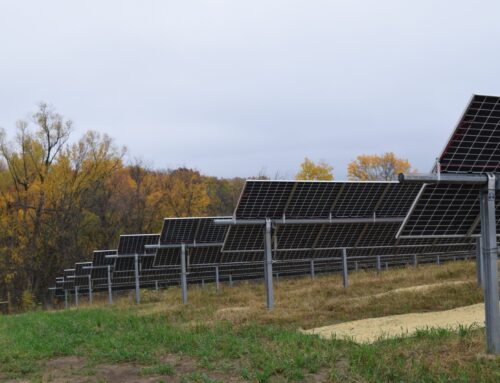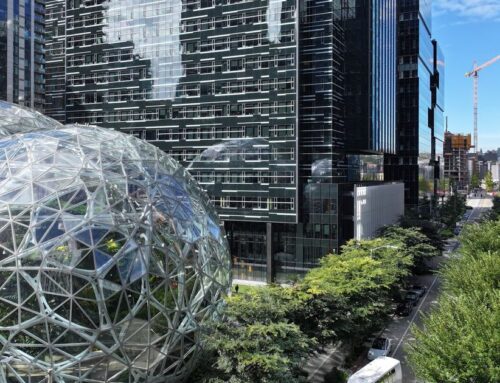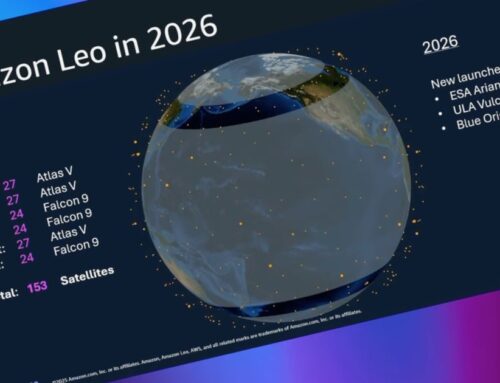Mangrove Restoration Update
May 28, 2025
Two years into the $3.3 million Fruit Farm Creek mangrove restoration project – the largest in Florida history at 209 acres – things are not progressing as quickly as planned. According to Jamie Wolanin, southwest regional biologist for the Aquatic Habitat Conservation and Restoration section of the Florida Fish and Wildlife Conservation Commission (FWC), an adaptive maintenance plan is being implemented this summer. The mangrove die-off area is located on the south side of San Marco Road, across from the Stevens’ Landing Condominiums and continuing east toward Goodland Drive.
The high-profile project is supported by funds from the National Oceanic and Atmospheric Administration (NOAA) and the State of Florida for a fisheries disaster related to Hurricane Irma. The Department of Environmental Protection, Rookery Bay, and the City of Marco Island also helped to put the project together. The City of Marco Island was responsible for contracting the moving of utilities and the installation of four five-foot diameter culverts under San Marco Road. The City of Marco Island pays nothing for the mangrove restoration project.
This winter season found the die-off area nearly completely dry for weeks on end. But that’s not the biggest concern, according to Wolanin.
“It is natural for these systems to experience drought,” Wolanin said, “just like any other habitat type during the dry season in Florida. We are more concerned about a specific area, Phase 2, which is in the northwest region of the project. It is still too wet, despite the reconnection improvements made by the restoration work. That is the area we are closely monitoring and implementing adaptive management to enhance tidal exchange and maximize recovery.
“In 2023, we noticed that one of the water level loggers was recording levels consistently higher than land surface elevation,” Wolanin said, “indicating that there is still some standing water, even during low tide. Standing water is problematic because mangroves are designed to be intermittently submerged in water, not constantly. Mangroves use their aerial roots like a snorkel to get oxygen from the air rather than the generally anoxic, muddy soil found in even a healthy mangrove forest.”
Wolanin hopes the adaptive maintenance plan will correct the problem.
“The FWC and partners have developed an adaptive management plan to combat this issue,” Wolanin said, “and we intend to implement it this November. We plan to hand-dig fingerling channels throughout the area of concern to improve the connection to the tidal creek, which will enhance flushing and create better conditions for mangrove propagule settlement and growth. The project team is hopeful that the adaptive management we implement this fall gives the area we are concerned about the boost it needs to recover at the same pace as the rest of the project.”
By now, the die-off area is supposed to be looking “a little shrubby,” according to a Coastal Breeze News interview with FWC’s Corey Anderson, who was in charge of the project at the time. Imperial observation shows that this is not the case. There appears to be little mangrove growth in much of the die-off area at this point.
“Mangroves are a fast-growing species, but the conditions must be right,” Wolanin said, “and it takes a long time to heal from decades of poor hydrologic connectivity and damage from several hurricanes in the last few years. The project team is hopeful that the adaptive management we implement this fall gives the area we are concerned about the boost it needs to recover at the same pace as the rest of the project.”
The plan for the die-off area was to have mangrove propagules to plant themselves as they enter the area through the tidal flow. If not, according to our earlier interview with Anderson, the propagules will have to be hand-planted.
“At this point,” Wolanin said, “we are hopeful that our plan to hand-dig channels will remedy the area that is not sufficiently hydrologically connected. We are happy with how most of the project is recovering, but will continue to monitor and adaptively manage the project in collaboration with project partners and regulatory agencies.”
Though data from the two-year post-construction monitoring report, conducted in February, has not been finalized, Wolanin has had the opportunity to look over the report and compare the data to the one-year and time-zero reports. She said there are reasons to be optimistic.
“The report will be finalized soon,” Wolanin said. “I got to look at some of the data and compared it to one year ago as well as at time zero. Overall, the number of trees and saplings, as well as their spread throughout our monitoring plots, has increased. We have also seen an increase in fish and benthic invertebrate diversity and abundance since time zero (Benthic refers to anything of, relating to, or occurring at the bottom on a body of water). All the monitoring data we collect is also collected in reference plots near the site, and those areas are showing signs of recovery from recent storm activity as well.”
The regulatory requirement is that the vegetation comes back within five years.
“The goal of the project,” Wolanin said, “and language included in our permits, is to see 80 percent wetland vegetation cover across the restoration area within five years. We are in year two post-construction, and results have shown 80 percent cover achieved in one of six designated monitoring plots. Some of the other plots show great signs of recovery, with both black and red mangrove saplings growing now that tidal flow is restored. It is too early to know for sure that we will reach our goals, but we are hopeful that our monitoring efforts will continue to show recovery throughout the restoration area. An important caveat to monitoring in this way is that we are only able to report what is happening in a few 1m2 plots in an area comprising about 70,000m2 (m2 is the abbreviation for square meter). There could be parts of the project recovering faster, but we cannot capture that due to the nature of our monitoring protocol.”
In a March 2023 interview, Anderson told the Coastal Breeze News that adaptive management was part of the original game plan. “The state and federal permits and the partners on the project allow us to do a little bit of adaptive management maintenance,” Anderson said. “If for some reason there’s a little hillock of sediment there that’s keeping the flow from going as we want it, I think we can go and make a path for the water to go. Make sure it functions right. It’s a science. But it’s also a little bit of an art.”
Anderson also told Coastal Breeze News in 2023 that he has a perfect record with mangrove restoration projects. “I haven’t had a project that hasn’t gone well or has flat out failed,” he said, “and I’m not about to. We’re going to make sure Florida’s largest mangrove project, to date, goes well.”
Recently, crocodiles have been spotted at the four, five five-foot diameter culverts that were installed under San Marco Road to restore tidal flow to the die-off area. Wolanin said that is a good thing.
“The project team is very excited to see that threatened species such as the American crocodile are using Fruit Farm Creek as habitat,” Wolanin said. “This is good evidence that these culvert structures are providing valuable exchange for both tidal flow and wildlife.”
Search
RECENT PRESS RELEASES
Related Post




